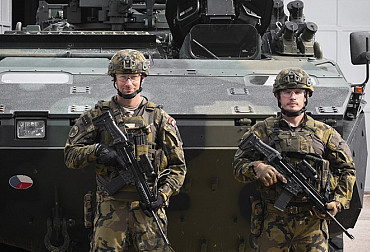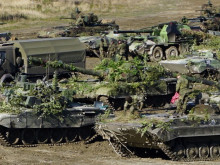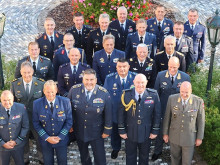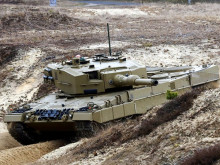Lynx KF41: New standard for Infantry Fighting Vehicles
The Czech Army needs modern infantry fighting vehicles capable of dominating the battlefield for the forthcoming 30 years. Therefore, not only mobility, survivability through firepower and protection, but also the adaptability and ability to meet the requirements of the battlefield of the future through growth potential are key factors to be taking into account when making the choice.
When acquiring capabilities for decades to come it is essential to take into account the entire life cycle costs. Some comparative contracts indicate that for these life-cycle-costs in addition to purchase and operating costs also future major upgrades needs to be taking into account. Thus, the total price over the 30-year cycle, including inflation, exceeds the original purchase price several times.
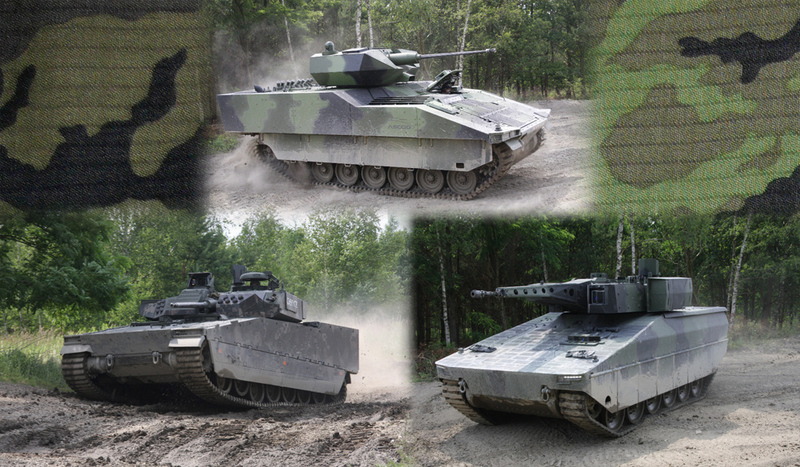
Picture: The Czech Army needs modern infantry fighting vehicles capable of dominating the battlefield for the forthcoming 30 years. | archive of CZD
The more dated the concept of the vehicle is at the time of its acquisition the more the costs incurred in upgrading will increase. In the never-ending leap-frogging between changing threats and AFV design, the limits of in-service IFVs is becoming increasingly apparent. Existing designs, many of which made their debuts more than decades ago, are rapidly approaching a tipping point beyond which protection and capacity can no longer be improved.
With the pendulum swinging back toward the increasing likelihood of peer-on-peer conflicts, the limits of IFV designs from the early 90ies of the last century is restricting performance to the point where potential enemies now have a clear technological advantage.
Undoubtedly, it is protection, capacities and adaptability which will define the next generation of IFVs and enable them to exceed current user requirements and have the inherent flexibility necessary to meet and to adapt to future threats and operational profiles throughout their life-of-type (LOT). This growth potential will include:
• Payload capacity to allow additional protection - both passive and active -, as well as increased firepower and other future features;
• Volume capacity to physically accommodate additional internal and external armour, new armament, equipment and systems;
• Automotive and mechanical capacity in order to retain and even improve vehicle mobility and responsiveness despite operating vehicle mass increases; and
• Generic Vehicle Architecture (GVA) and electrical power capacity to be open to integrate new systems, sensors and equipment effectively.
This capacity must be built into an IFV from inception; it can rarely be added afterwards successfully, and if so then only in a piecemeal and limited manner.
One IFV design now has the ability to achieve all of this: the new Rheinmetall Lynx KF41.
Origins
Following on from the development of the KF31 and the Lynx family of tracked combat vehicles, the concept for the Lynx KF41 has its genesis in the operational requirements that modern armies are likely to face in the years ahead.
With armoured manoeuvre at the core of an army’s ability to fight, survive and win on the battlefields of today and tomorrow and with the IFV often the most plentiful and versatile of combat vehicles within a manoeuvre force, it is critical that the modern IFV possess the necessary protection, mobility and firepower for today’s threats rather than those of the past.
%20lr.jpg)
Picture: Lynx KF41 | Rheinmetall
Due to changes in the European Security environment - the focus has been and is shifting more to defending home countries and meeting peer-to-peer enemy.
In the last decade the potential threat to Western IFVs significantly increased by the new development of fighting vehicles - such as the T-14 and T-15 -, as well as capability upgrades - e.g. for T-90 - based on the new technologies. Modern design and concepts, combining layered, active, reactive and passive protection systems, together with new weapon technologies - high performance ammunition, 57mm machine canons and long range anti-tank guided missiles - provide these vehicles with excellent capabilities on the battlefield.
Countering this threat requires both latest state-of-the art equipment as well as credible quantities of combat systems, such as IFVs and MBTs. By this, we are both prepared to meet and defeat peer-to-peer enemy but we also making sure that there are no “power vacuums” which might be leading to a miscalculations in the first place.
As hand-held anti-armour weapons continue to proliferate and asymmetric threats to ground forces show no signs of abating, highly capable IFVs will be the key to success across the spectrum of operational contingencies. This is particularly so in a world where populations are becoming increasingly urbanised and in a planning environment where operations in complex terrain are routine.
This will require the IFV to conduct a diverse range of tasks – from patrols in hostile and defended urban neighbourhoods, to mounted combat operations in open terrain to reconnaissance and peace support missions.

Picture: Lynx KF41 | Rheinmetall
Coupled with a disaggregated battlespace with state and non-state participants and complex human terrain where the front line is poorly defined, it becomes clear that if an IFV is to remain deployable and operationally relevant into the future it must have the ability to be adapted as required. This requires an abundance of capacity and flexibility.
The Lynx KF41 has been designed to meet the following operational needs from inception:
• Combined arms capabilities at the platoon level so that commanders can adapt while in contact;
• Combined arms fighting systems to conduct operations across the spectrum of conflict;
• High mobility to enable tactical flexibility in contact;
• Adaptable vehicle systems that can be upgraded or modified in theatre; and
• Survivability that forces the enemy to operate above the detection threshold.
This has resulted in a vehicle with:
• High levels of inherent capability;
• Modularity to tailor protection and achieve rapid upgrades;
• Open electrical, electronic, software and mechanical architectures; and
• Growth in payload and electrical power.
It is in this cauldron of non-negotiable operational requirements and mission sets that the Lynx KF41 design parameters were forged. The Lynx KF41 is a continuation of Germany’s extensive legacy in cutting-edge AFV design, a legacy that began with the invention of the world’s first IFV in 1958 - the Schuetzenpanzer 12-13, which later evolved into the Marder.
Currently-fielded IFVs have in recent years been adapted to meet evolving needs largely through urgent operational requirement acquisitions, a process which invariably results in design limits being exceeded and the triggering of an increasing platform weight spiral. This process also encourages degraded reliability and mobility, inadequate through-life support solutions and compromised training.
A technically low-risk design, the Lynx KF41 becomes the most balanced IFV in the world, with scalable protection levels, 30mm, 35mm or larger calibre machine cannon options, an ability to seat up to nine dismounts and high mobility, because of low ground pressure and a well-balanced power-to-weight ratio.

Picture: Lynx KF41 | Rheinmetall
To reduce technical and commercial risk, Rheinmetall, a well-known German Defence and Automotive group, has undertaken an extensive in-house development and maturation program for the Lynx KF41 and used proven sub-systems across all vehicle variants. Crucial systems, like the Lance medium calibre turret fitted with the Rheinmetall machine canon Mk-2 with air burst capability, the Liebherr engine, transmission, driver’s station, nuclear, biological and chemical (NBC) filtration system, power electronics and track system are in service in internationally successful combat systems, such as the AEV 3 Kodiak, 8x8 Boxer, the AIFV Puma or the PzH 2000. So mature off-the-shelf technologies from global (e.g. SupaShock suspension from Australia), European and Czech (Cabling and components from RayService) suppliers are composed to create the most formidable infantry fighting vehicle of the 21st century.











